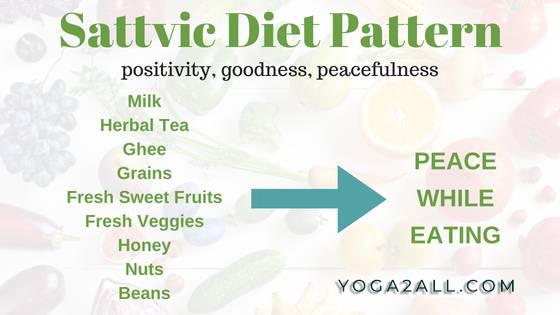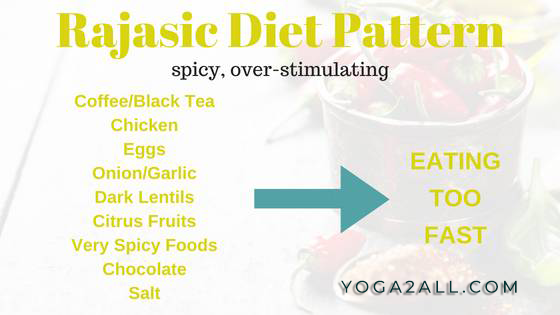
Did you know that aside from improving the state of the body and mind, yoga also has a particular branch dedicated solely to food? Yes, we are talking about yoga diet. Being one of the six systems of Hindu philosophy, it is a system rich in principles that help us live a better life. Here we are going to talk about the role of a healthy food diet in the inner and outer harmonic balance we are trying to achieve.
The Three Yogic Diet Patterns
There are many types of yoga, such as Ashtanga yoga, hatha yoga, or Vinyasa yoga. They are different according to their styles, intensity, or purpose. For example, an Ashtanga course is considered to be one of the most challenging yoga courses together with Bikram, a known yoga style where the instructor is telling the students what to do instead of demonstrating it for them. Hatha, on the other hand, is perfect for beginners because of its less challenging poses.
Influenced by the other systems and many other ancient teachings, yoga is an accumulated set of beliefs and traditions that continues to sweep the world by its feet. That’s why it goes way beyond being a mere exercise to tone muscles or improve body strength; it is a lifestyle that guides us on many aspects of our everyday lives. Originating from Ayurvedic medicine, the following diet patterns are just among the many yoga teachings.
1. Sattvic Diet Pattern
According to the yoga philosophy, there are three types of diet. The first one is what we call the sattvic food. It comes from the word “sattva”. Developed by the Sankhya, the school of Hindu philosophy that’s closely related to yoga, ‘sattva’ refers to the quality of living that’s governed by positivity, goodness, peacefulness, etc. From this, the sattvic diet refers to consuming food that is nourishing, tasty yet fresh.
What quickly comes to mind are fruits, vegetables, and other fresh, healthy foods that provide us with sufficient energy and at the same time make us feel confident and light. An excellent example of sattvic foods and supplements are whole grains. Whole grains have a long list of health benefits. For one, it helps us control our cholesterol levels. It is also a good source of fiber. Eating whole grains is also known to reduce risks of having heart diseases.
If you’re planning to have a sattvic diet, an excellent addition would be pure fruit juices. We can’t emphasize enough how beneficial these drinks are. Ditch your sugar-filled sodas and other bottled fruit juices that don’t give you any health benefit.

2. Rajasic Diet Pattern
The second type of diet according to yoga is called the Rajasic diet. This type of diet is composed of foods that have extreme taste or aroma. They are associated with feelings of sensuality, covetousness, and even selfishness.
The rajasic diet may seem to have a negative connotation, but it is recommended, according to yoga philosophy, to those who are in extremely stimulating fields. This is because they provide the sense of excitement and are believed to enhance one’s mental capacity. This diet pattern is perfect for those who are unable to sit still, those who feel they have to be doing something all the time.
Rajasic foods include spices such as chili, onion and garlic, meats, coffee, etc. Although there are a lot of health benefits can be derived from this diet, experts believe that they should be taken in moderation. When people consume too much of this food group, and for far too long, it shows in the state of their body and mind. The good thing is, the effects are not permanent and can still be reverted to the sattvic pattern the ideal.

2. Tamasic Diet Pattern
And the third type of diet is what we call the Tamasic diet. Opposite to the sattvic diet, tamasic diet includes food that is generally bad for one’s health. Eating these foods yield negative feelings or states such as lack of intelligence, pessimism, indolence, etc.
Examples are deep fried foods, alcoholic beverages, oily foods, undercooked meals, and many more. This diet should be avoided at all costs if you want to succeed in yoga because it is believed to generate anger and tendencies for one to get involved in criminal activities.
These three yogic diet or yoga diet patterns guide us on how food affects not just our physical health but also our mental and emotional states. This guide also gives us an avenue towards explaining our different states of mind. It allows us to recognize the source of negative emotions and provides us ways on how to divert it to follow the right path.

Author Bio
 Anshu is the founder of Yolig.com, where she and her associates’ blog about the Yoga and Health that will help you get healthier and have a good lifestyle. Yolig.com is concentrated on the tips on how to practice yoga effectively and how to have a better and healthier lifestyle. She is also a Yoga Master for more than 7 years with professional teaching skills and excellent knowledge about Yoga. Website: I – –
Anshu is the founder of Yolig.com, where she and her associates’ blog about the Yoga and Health that will help you get healthier and have a good lifestyle. Yolig.com is concentrated on the tips on how to practice yoga effectively and how to have a better and healthier lifestyle. She is also a Yoga Master for more than 7 years with professional teaching skills and excellent knowledge about Yoga. Website: I – –







